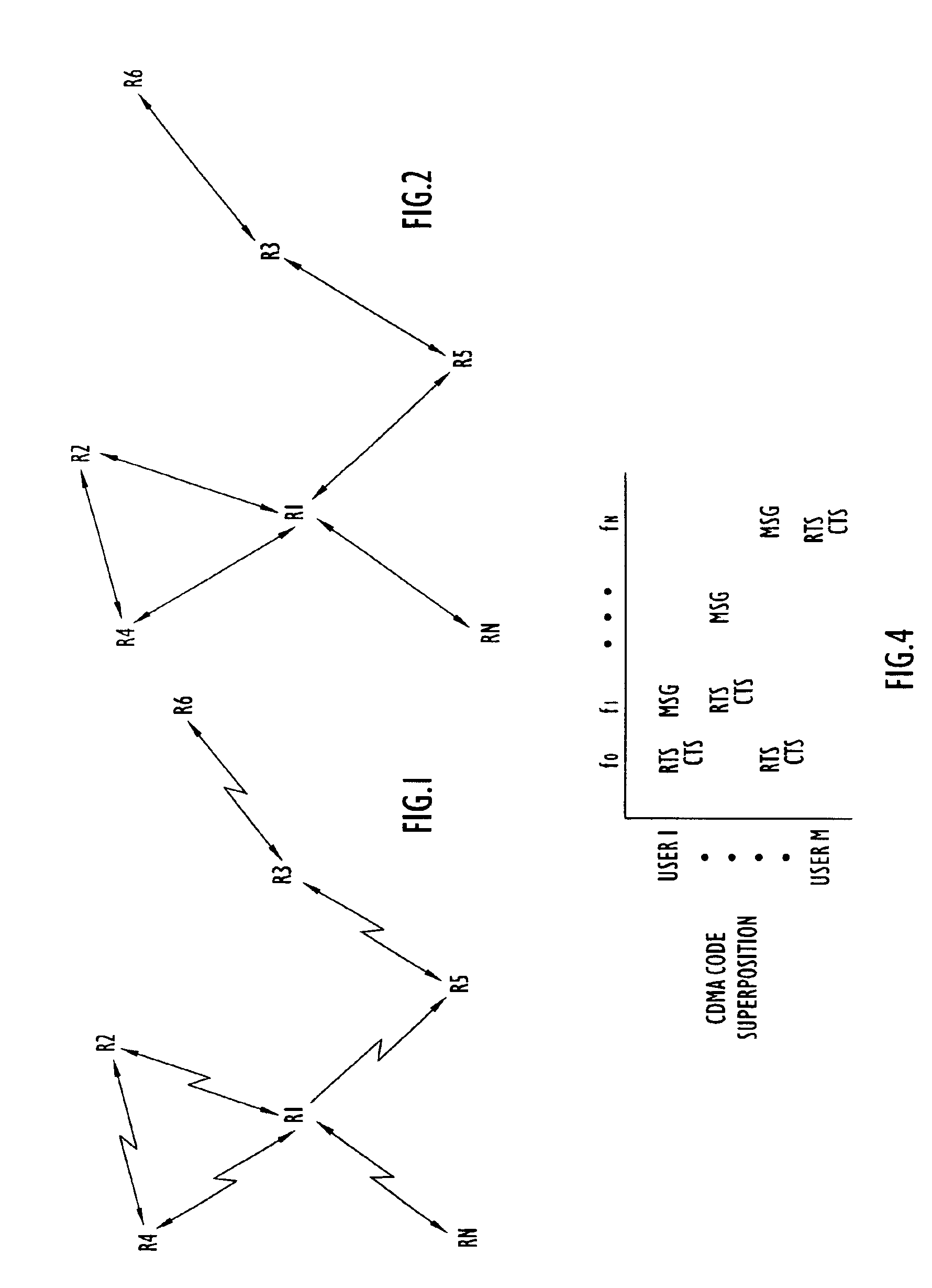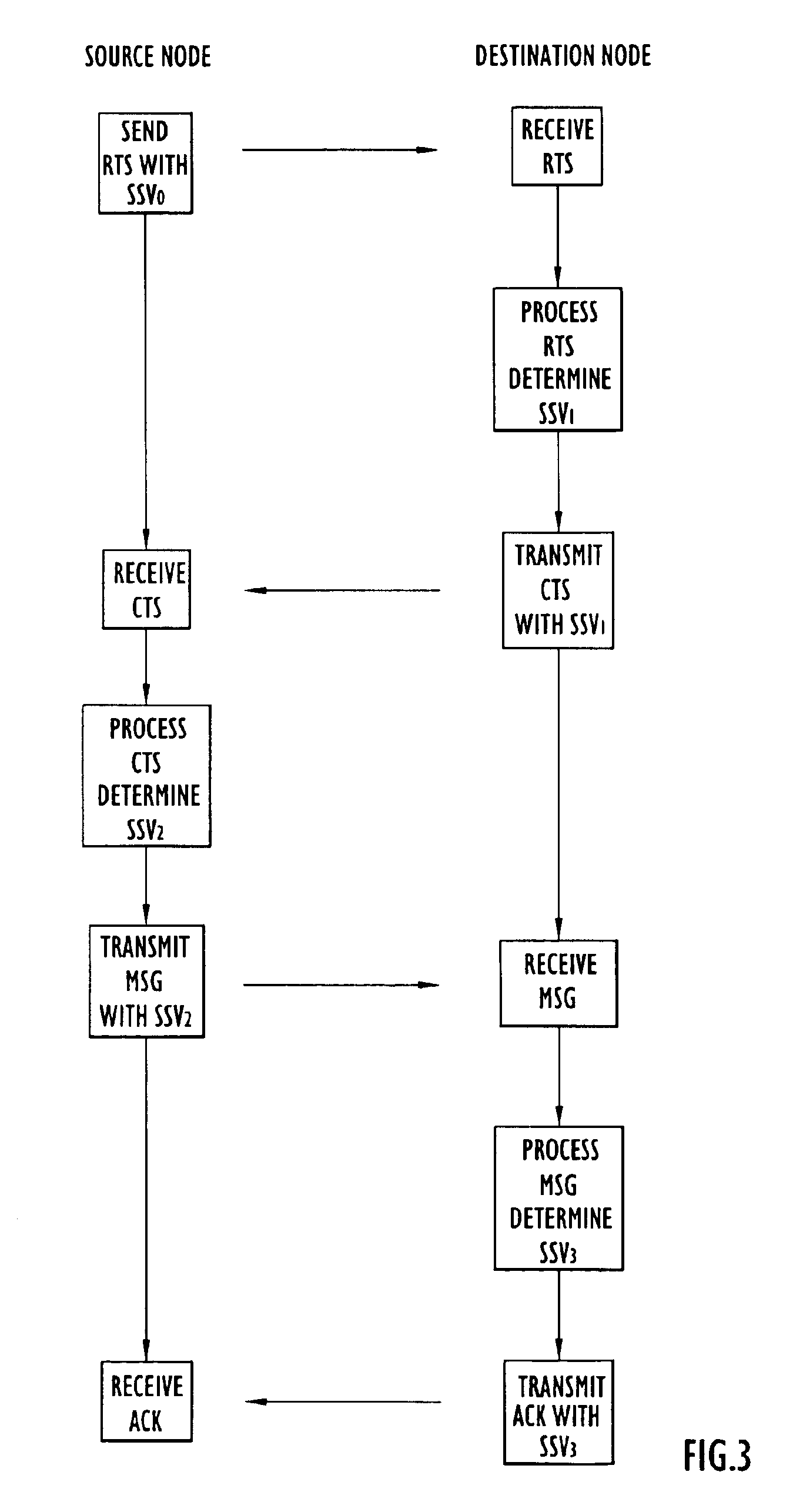Methods and apparatus for organizing selection of operational parameters in a communication system
a communication system and operational parameter technology, applied in the field of methods and apparatus for organizing the selection of operational parameters can solve the problems of ineffective communication system, limited or severely cripple strategic communication lines, intentional jamming or unintentional interference in the communication system, etc., to eliminate the need for a base station providing centralized control and best expected performance
- Summary
- Abstract
- Description
- Claims
- Application Information
AI Technical Summary
Benefits of technology
Problems solved by technology
Method used
Image
Examples
Embodiment Construction
In accordance with the present invention, nodes within a network reliably and efficiently transmit and receive information by dynamically coordinating selection of multiple transmission parameters as a function of operational requirements and the present environment affecting the condition of the communication medium. As used herein, the term “node” refers to a communication device operating in a network of communication devices. The node may be a mobile communication device, such as a radio, wireless telephone, or multimedia terminal capable of transmitting and receiving audio, video and data information. Alternatively, the node may be stationary or fixed in a particular location. As used herein, the term “channel” refers to a communication path between nodes, and different channels can exist on separate communication media or on a common communication medium, with individual channels being separated by any suitable means, such as any combination of time, frequency, or encoding.
Nod...
PUM
 Login to View More
Login to View More Abstract
Description
Claims
Application Information
 Login to View More
Login to View More - R&D
- Intellectual Property
- Life Sciences
- Materials
- Tech Scout
- Unparalleled Data Quality
- Higher Quality Content
- 60% Fewer Hallucinations
Browse by: Latest US Patents, China's latest patents, Technical Efficacy Thesaurus, Application Domain, Technology Topic, Popular Technical Reports.
© 2025 PatSnap. All rights reserved.Legal|Privacy policy|Modern Slavery Act Transparency Statement|Sitemap|About US| Contact US: help@patsnap.com



